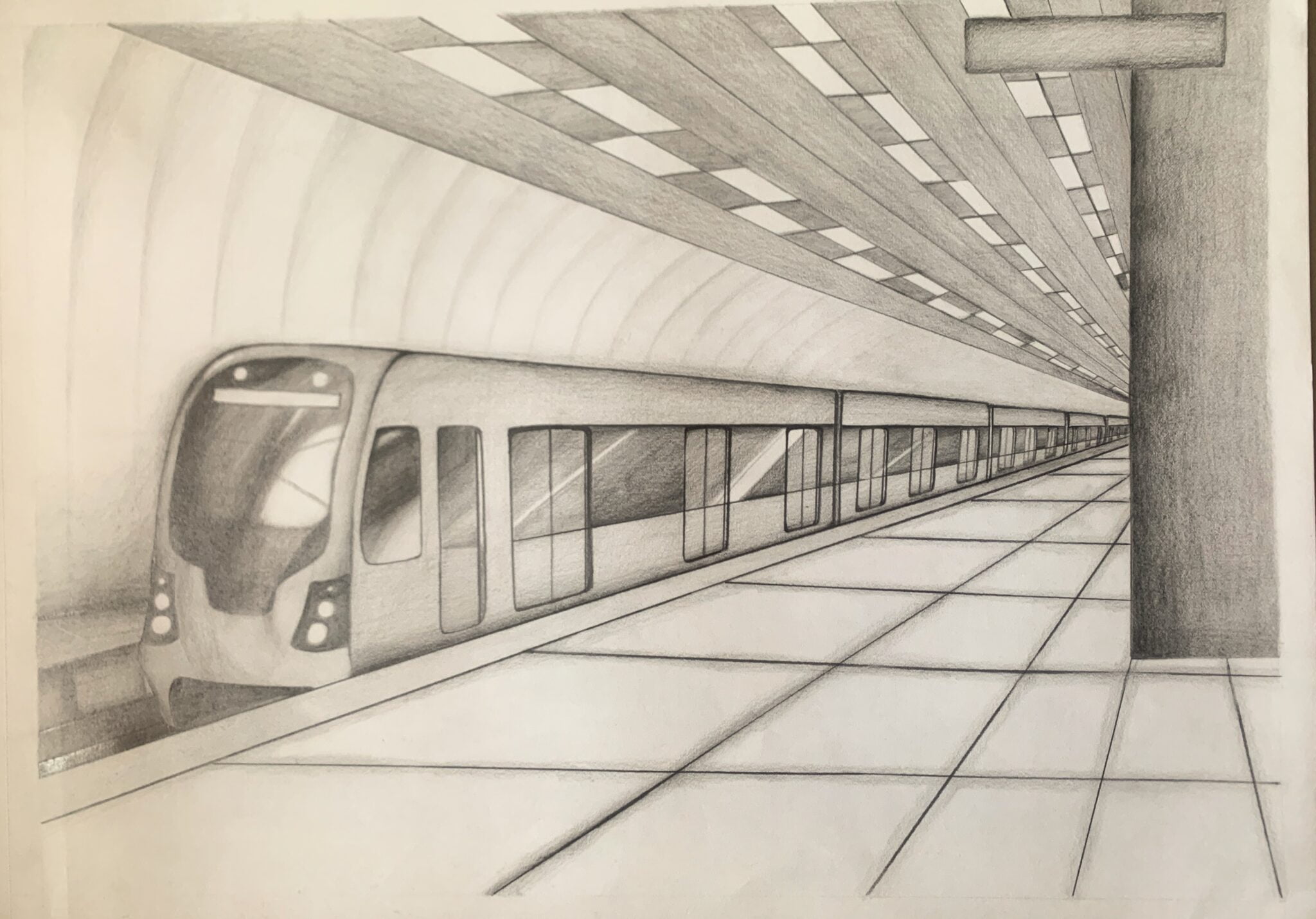One point perspective is a linear perspective used in art to make it appear three-dimensional and realistic. We use our vision to perceive the whole world in perspectives, and it is perceived in a three-dimensional view, to put it in a two-dimensional medium like a paper, provides for this method’s usage, to make it appear three-dimensional. The one-point perspective has been widely used across the world for various purposes in various fields.
Perspective in art becomes quite important given the realism and depth that they add to the art piece. However, perspective not only helps generate a more realistic image but also can be played with to create a distorted and disoriented effect. In fact, perspective analysis forms the basis for the formation of different effects in art forming a visual synthesis of textures, shapes, warmth, and reflections.
WHAT DOES VANTAGE MEAN?
A vantage is a place or position providing a good view of something.
ONE POINT PERSPECTIVE PROVIDES FOR A VANTAGE POINT OF THE SCENE APPEARING IN THE ARTWORK.
A mathematical system for representing three-dimensional objects and space on a two-dimensional surface using intersecting lines drawn vertically and horizontally and radiating from one point on a horizon line. It is simpler than it sounds.
It is simply made by drawing a horizontal line, usually on the eye level, and a single point is drawn on it. This technique is about how all the forms in the composition converge into this vanishing point.
Popularly, when we look into something long and elongated on the front view like roads, railway tracks, or a series of buildings or streetlights, to depict how it gets smaller and farther away in the view, we use a 1-point perspective to express it in 2 – dimensional medium. When we face the surface of the view, in a 1-point perspective, it appears as its true shape, without any distortion.
WHAT ARE THE STEPS IN MAKING ONE POINT PERSPECTIVE SKETCH?
They are primarily drawn using horizontal and vertical lines. Usually, at eye level, we draw the horizon line, and all the other lines from the end of other subjects converge into a point in this line called the vanishing point. So we make a point called the vanishing point on the horizon line, usually, we initially practice this by drawing boxes and drawing lines from the corners of these boxes to join the vanishing point on the horizon line. The lines that recede to the vanishing point from the corner of each object are called Orthogonals.
All these orthogonals or the lines from the corners of the objects have one and only the same vanishing point. The back “face” of the cube is added by drawing another square that touches all four orthogonals as they recede back into space. This process is easily replicated to create additional objects. Each object that is drawn uses the same vanishing point. A new vanishing point is not created within the picture plane. We can make the scene complex by adding more lines or features or details to it or even more depth, and vice versa to keep it simple as it is.
The application of this technique (One point perspective) is not limited to buildings and roads but it is numerous, it can be used in many places.
The horizon line and the orthogonal are usually drawn very light and feeble only for the understanding of the placement of the objects in the scene, it can finally be erased, once the picture is done. Its applications are mainly and widely used in architecture and interior design. But it is not only limited to it, it has wide usage over various things. With two vanishing points similarly two-point perspective is derived in its process and similarly with three vanishing points for a three-point perspective.
Learning and practicing art go hand in hand with establishing the right techniques, techniques play synonyms to optimization in the world of art. While art is a self-reliant expression of its own building the foundations and the rudimentary principles becomes essential for a meaningful and impactful creation of an art piece.
Sampratishta is one such school that aims to establish enhanced artistic expression and communication through the very rudimentary foundations of art offered as structured art courses that elaborate on the chapters of perspectives, lights, shadows, and contrast, rendering a complete guide to embracing fine arts.




